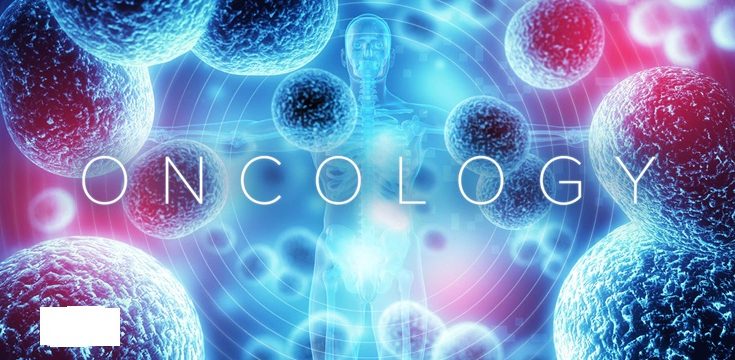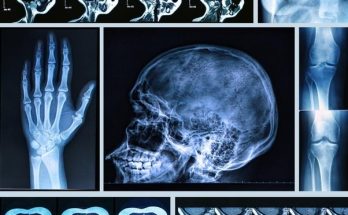Basic Physics of Radiation: Ionizing Radiation, Its Interaction with Matter, and Biological Effects
1. Introduction to Radiation
Radiation is the emission or transmission of energy in the form of waves or particles. It can be classified into:
- Non-ionizing radiation (low energy, does not remove electrons) – e.g., radio waves, microwaves, infrared, visible light, and ultraviolet (UV) light.
- Ionizing radiation (high energy, removes electrons from atoms, creating ions) – e.g., X-rays, gamma rays, and particle radiation (alpha, beta, neutrons).
2. Ionizing Radiation and Its Types
Ionizing radiation carries enough energy to ionize atoms and disrupt molecular structures, leading to chemical and biological effects.
2.1 Types of Ionizing Radiation
🔹 Electromagnetic Radiation
- X-rays: Generated by electron transitions or deceleration.
- Gamma rays (γ-rays): Emitted from the nucleus of radioactive atoms.
🔹 Particulate Radiation
- Alpha (α) particles: Heavy, highly ionizing, low penetration (stopped by paper).
- Beta (β) particles: Lighter, moderate ionization, higher penetration (stopped by aluminum).
- Neutrons: High penetration, interact with nuclei, used in nuclear reactors.
3. Interaction of Ionizing Radiation with Matter
When radiation passes through matter, it interacts with atoms and molecules via various processes, leading to energy transfer and biological effects.
3.1 Mechanisms of Interaction
(i) Charged Particle Interactions (Alpha and Beta Particles)
- Ionization – Complete removal of an electron from an atom.
- Excitation – Electrons move to a higher energy state without being removed.
- Bremsstrahlung (Braking Radiation) – When beta particles slow down in a material, they emit X-rays.
(ii) Photon Interactions (X-rays and Gamma Rays)
- Photoelectric Effect – A photon ejects an electron from an atom, creating an ion pair. Occurs at low photon energies (<100 keV).
- Compton Scattering – A photon transfers part of its energy to an electron, changing direction. Dominant at 0.1–10 MeV.
- Pair Production – A photon converts into an electron-positron pair. Happens at high energies (>1.022 MeV).
Photon Interactions with Matter (Photoelectric Effect, Compton Scattering, and Pair Production)
(A schematic representation of different photon interactions with atoms.)
4. Radiation Energy Transfer and Dose Concepts
4.1 Linear Energy Transfer (LET)
- Definition: The energy deposited by radiation per unit length of tissue.
- High LET radiation (alpha particles) causes more damage in small areas.
- Low LET radiation (X-rays, gamma rays) spreads energy over a larger distance.
4.2 Absorbed Dose (D)
- Measured in Gray (Gy): 1 Gy = 1 Joule/kg of absorbed energy.
- Higher dose = greater biological effect.
4.3 Equivalent Dose (H)
- Adjusts for radiation type: H = D × WR (where WR is the radiation weighting factor).
- Measured in Sieverts (Sv).
Image: LET Comparison Between Alpha, Beta, and Gamma Radiation
5. Biological Effects of Ionizing Radiation
5.1 Direct vs. Indirect Effects
- Direct Effect: Radiation interacts directly with DNA, causing breaks in the double-stranded structure.
- Indirect Effect: Radiation interacts with water molecules, generating free radicals (OH•, H•) that damage DNA.
5.2 Cellular and Molecular Damage
- DNA strand breaks (single-strand and double-strand).
- Base damage and mutations leading to cancer.
- Cell cycle arrest and apoptosis (programmed cell death).
6. Radiation Dose-Response Relationship
6.1 Stochastic vs. Deterministic Effects
- Stochastic Effects: Probability increases with dose (e.g., cancer, genetic mutations). No threshold.
- Deterministic Effects: Severity increases with dose (e.g., radiation burns, cataracts). Threshold exists.
6.2 Radiation Sensitivity of Different Tissues
- High Sensitivity: Bone marrow, intestines, gonads.
- Medium Sensitivity: Skin, lungs, liver.
- Low Sensitivity: Brain, muscles.
7. Radiation Protection Principles
To minimize radiation risks, three key principles are used:
- Time – Reduce exposure duration.
- Distance – Increase distance from the source.
- Shielding – Use lead, concrete, or water barriers.
8. Conclusion
- Ionizing radiation interacts with matter through ionization, excitation, and scattering.
- Different types of radiation (alpha, beta, gamma, neutrons) affect materials and biological tissues differently.
- Biological effects include DNA damage, cell death, and cancer risk.
- Radiation protection measures are crucial in medical, industrial, and nuclear applications.



